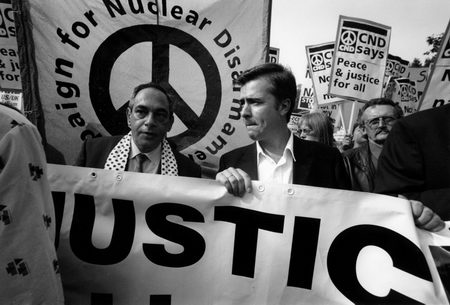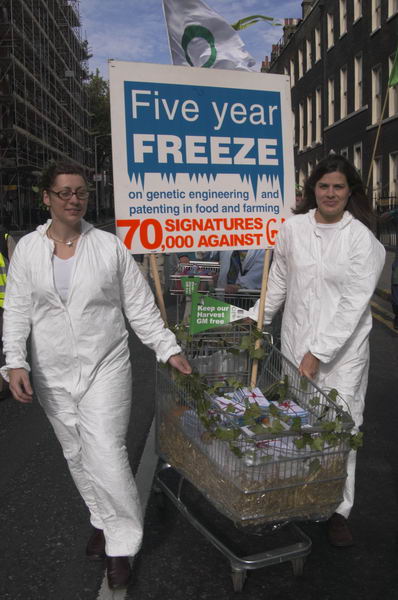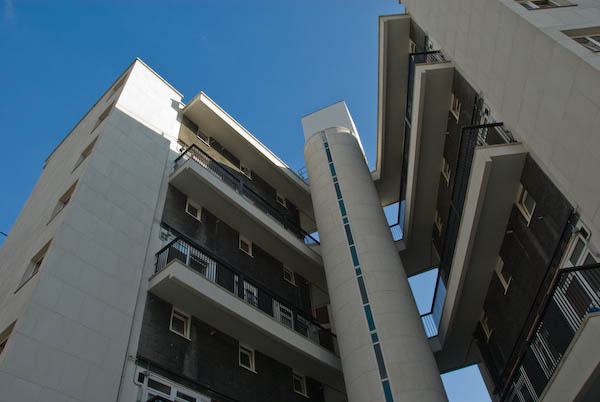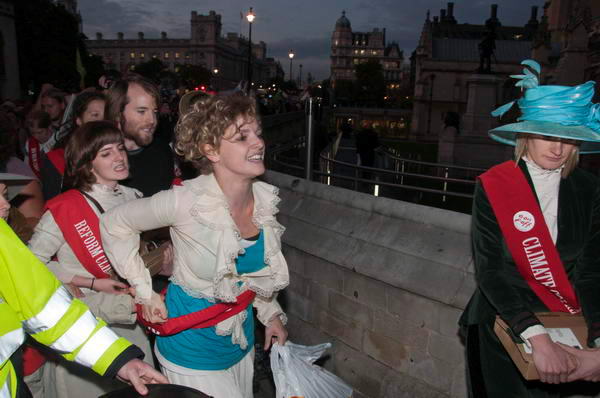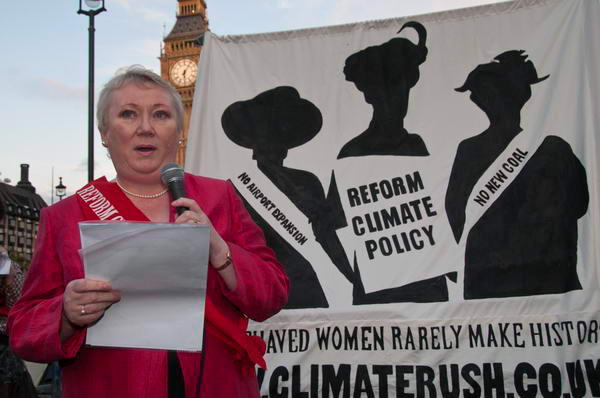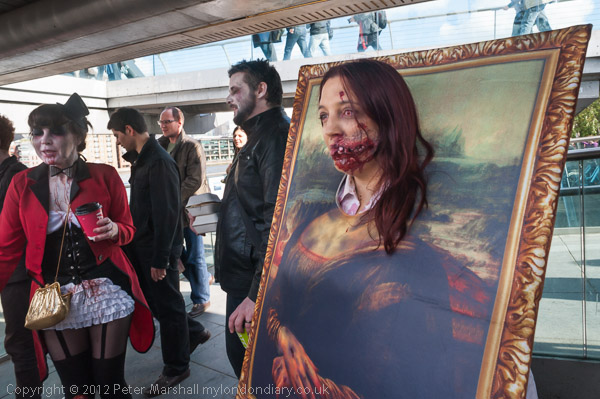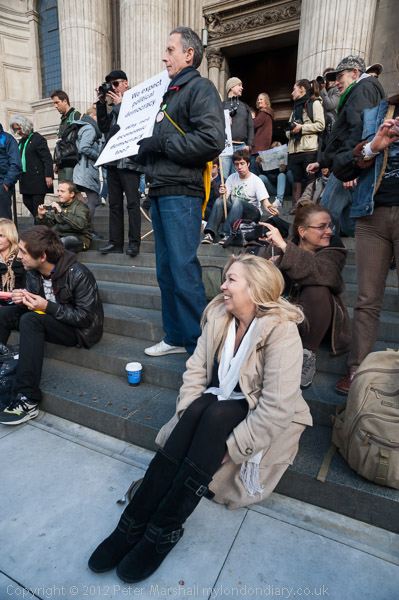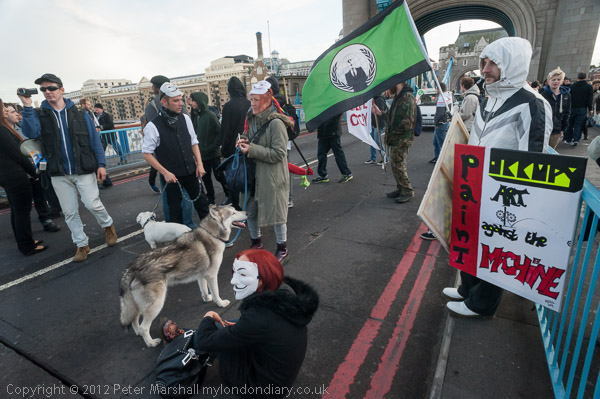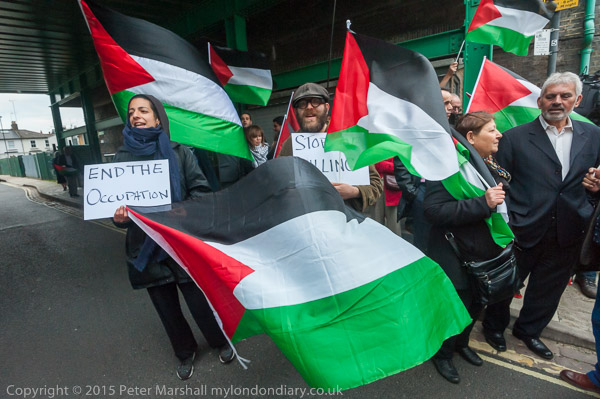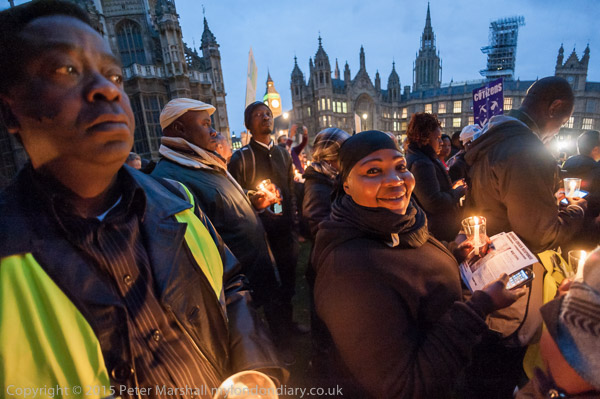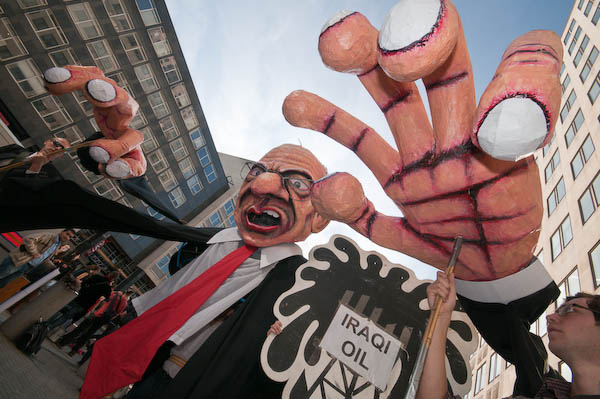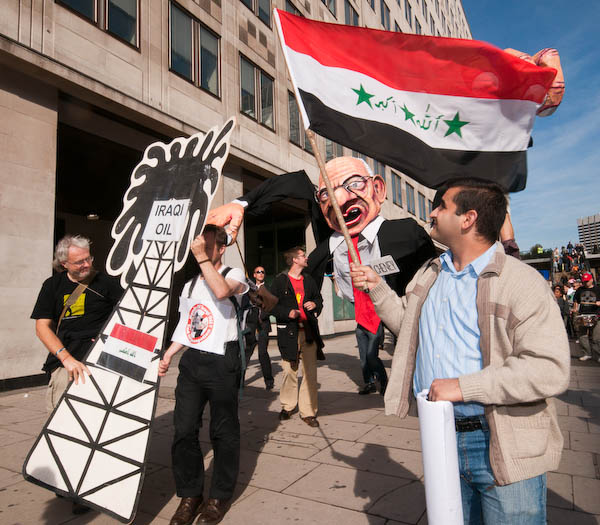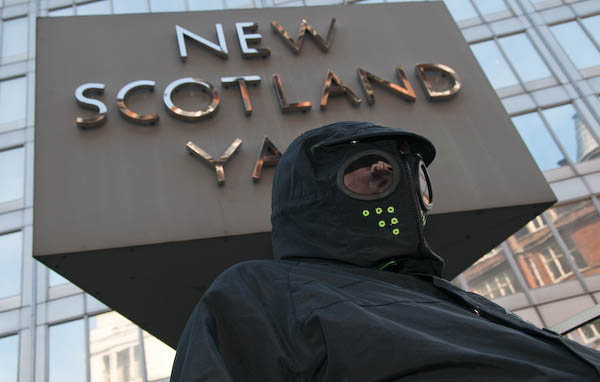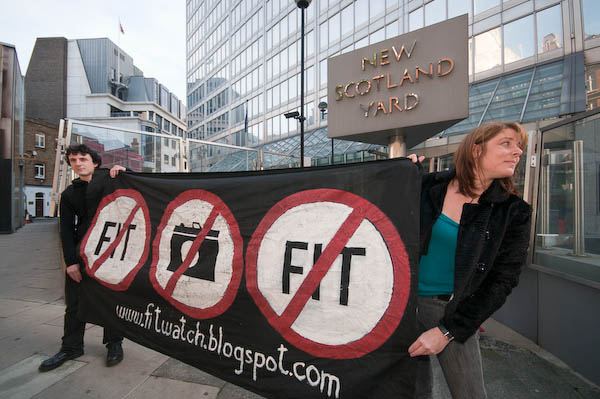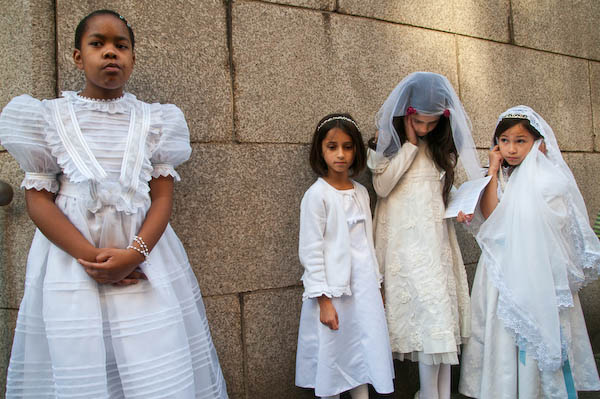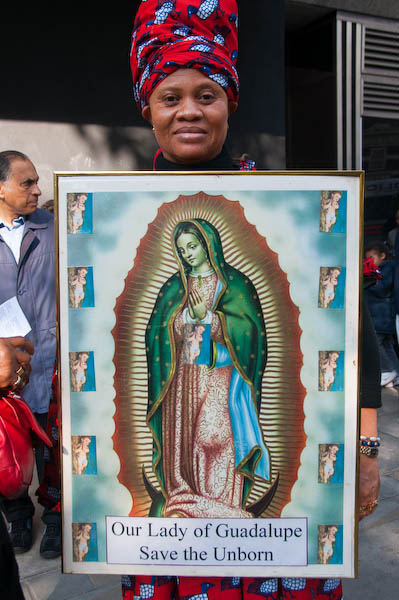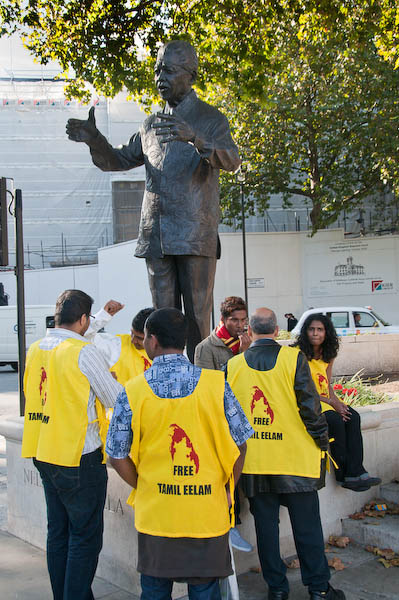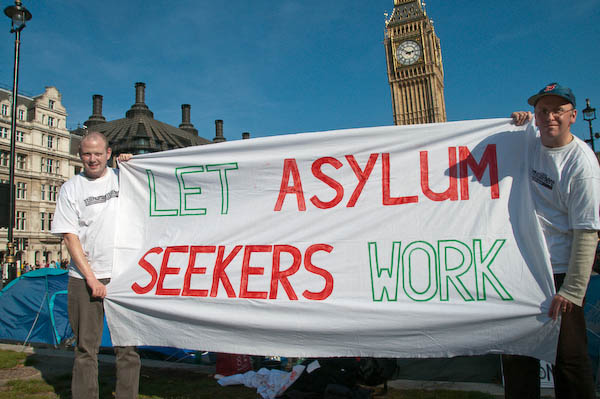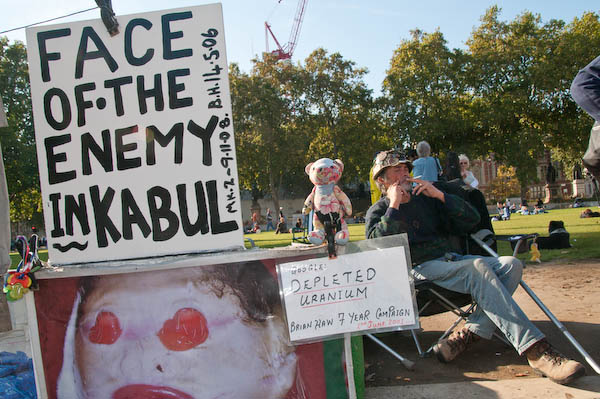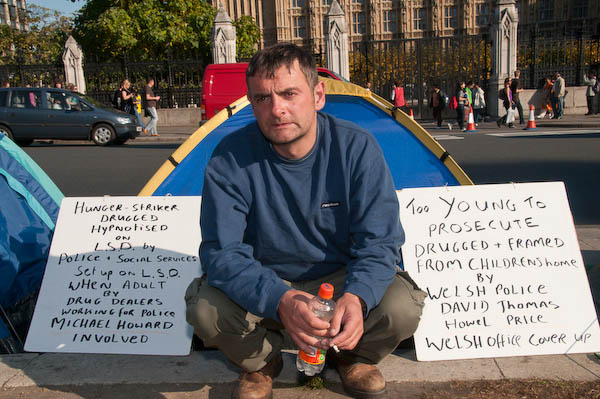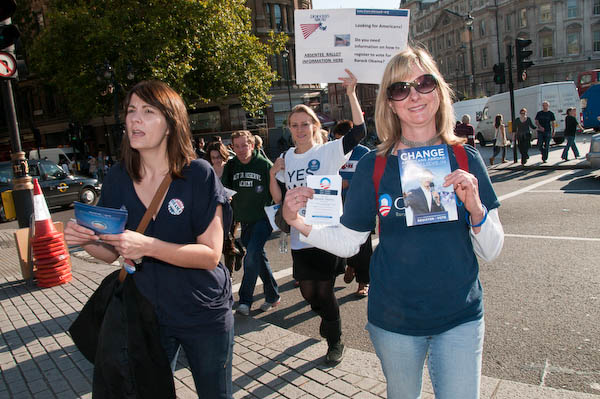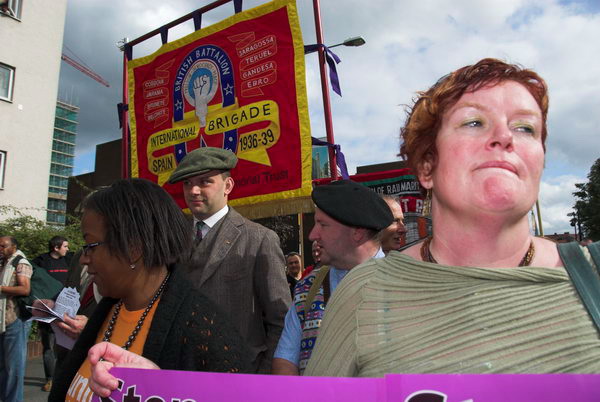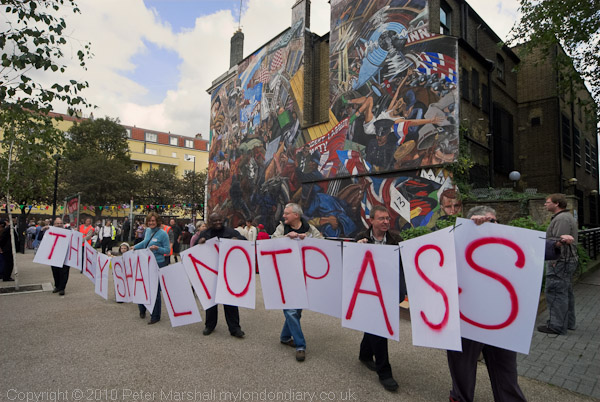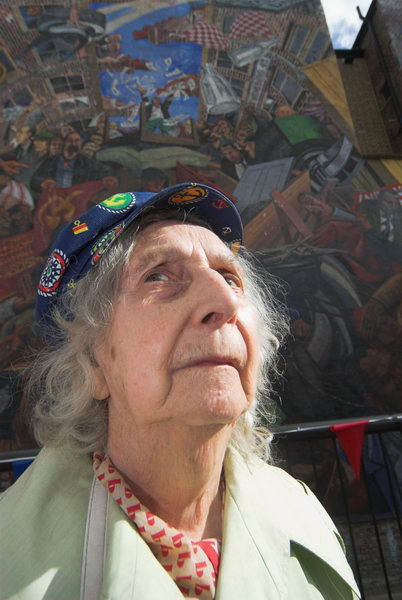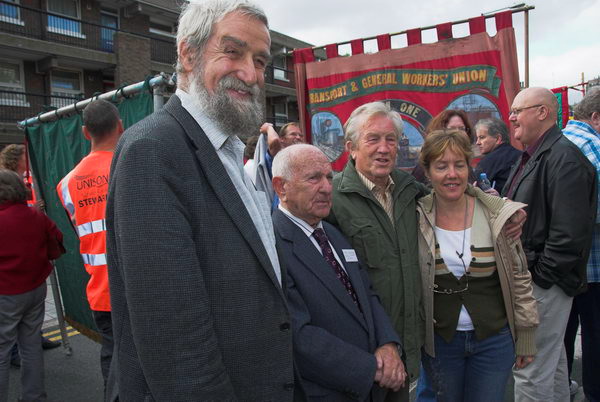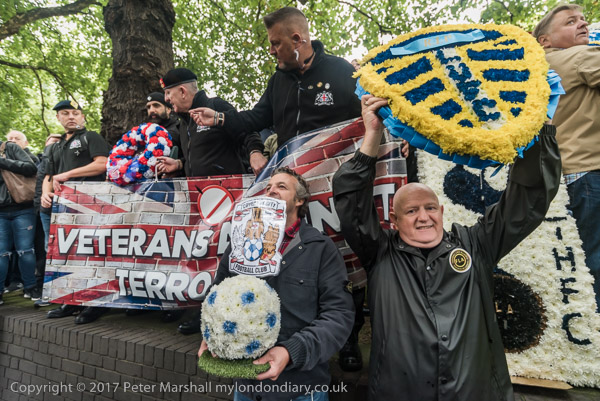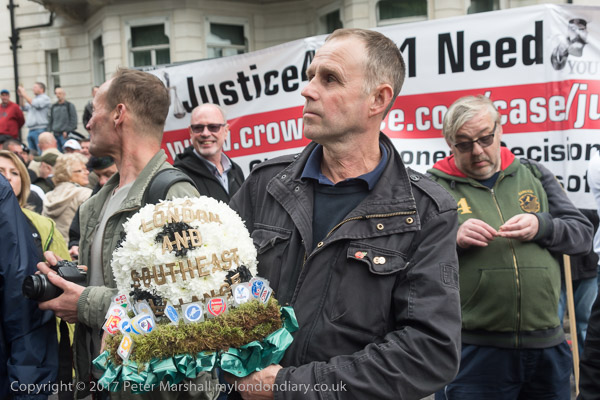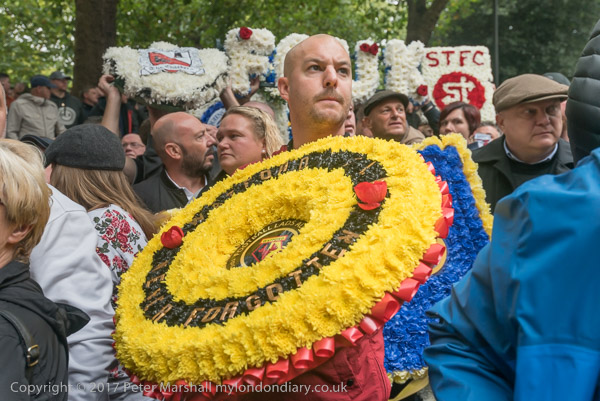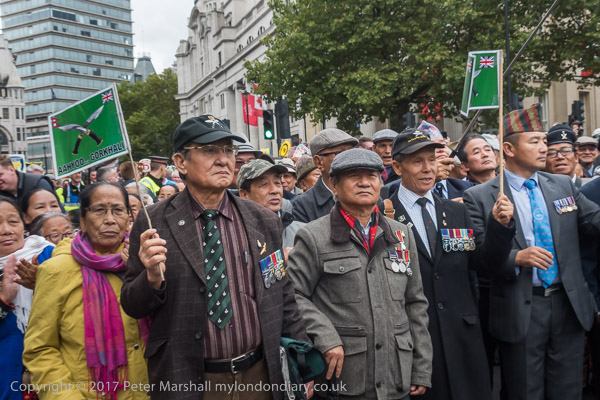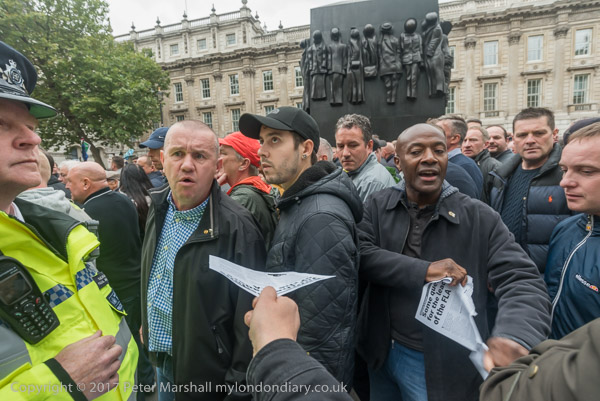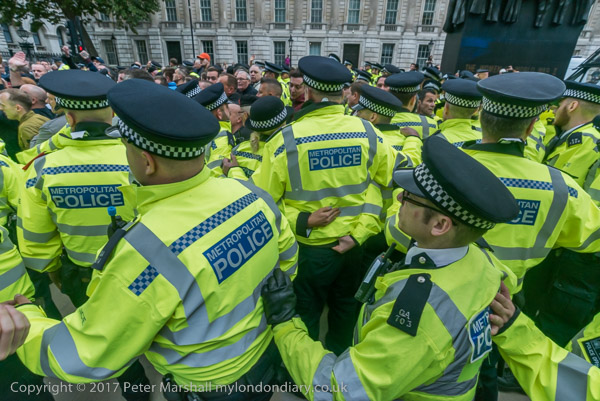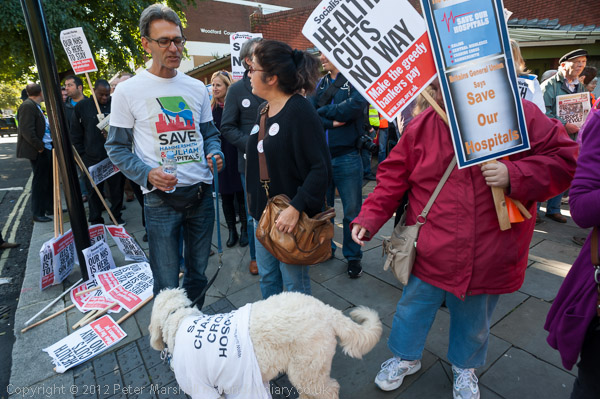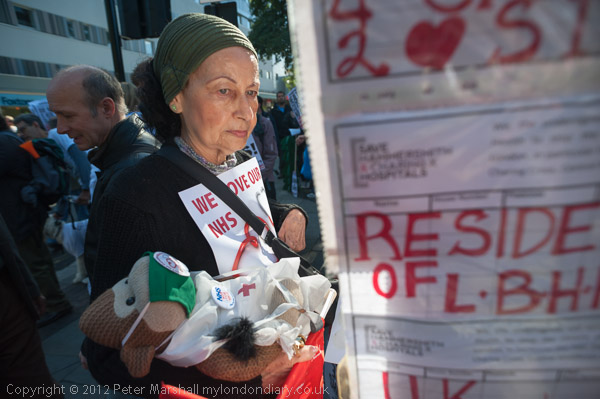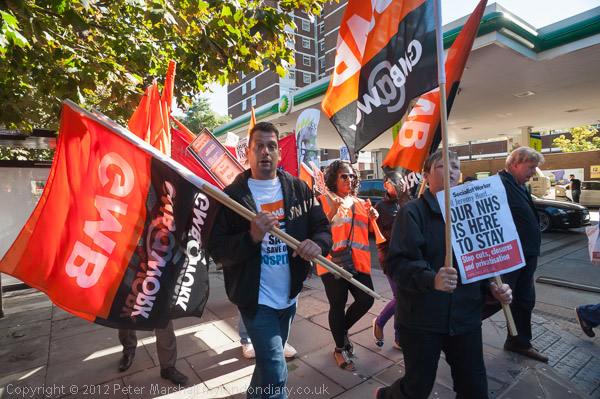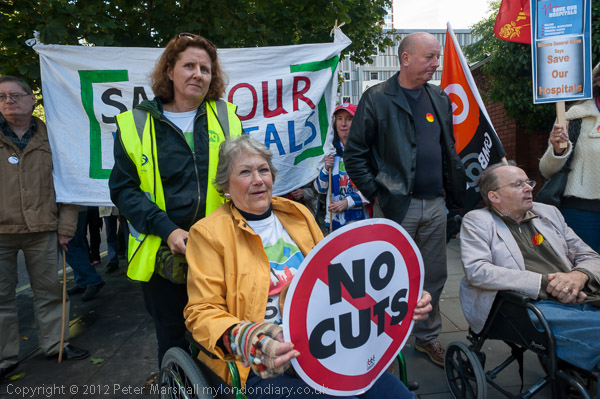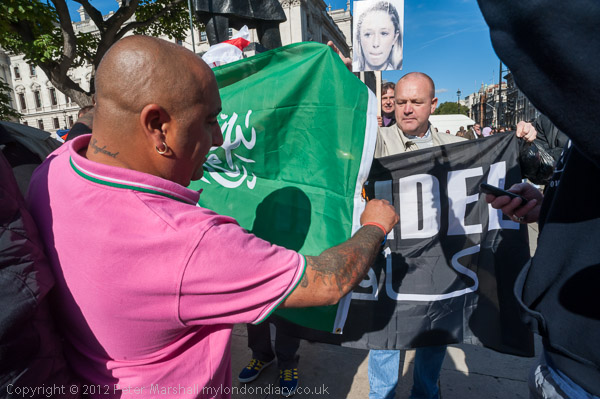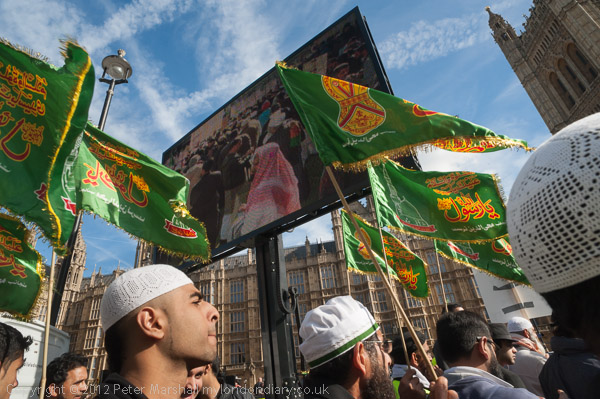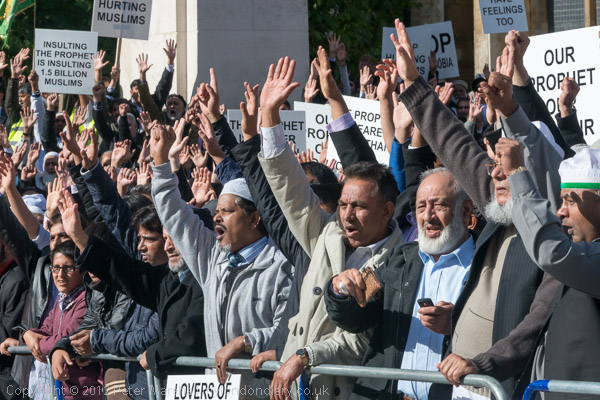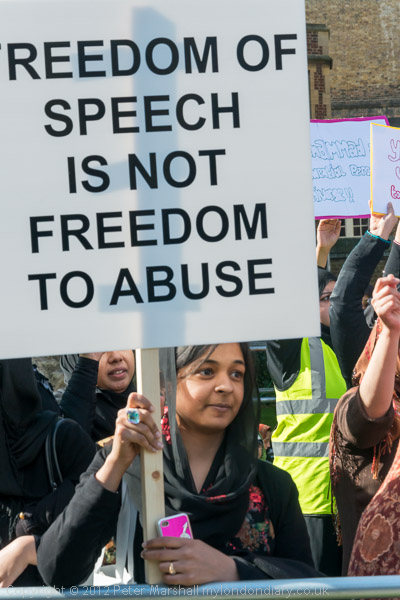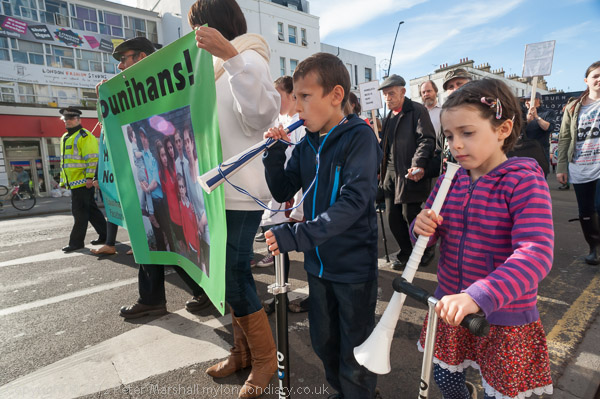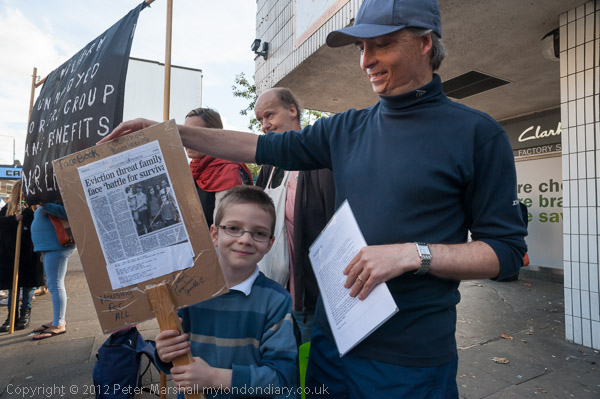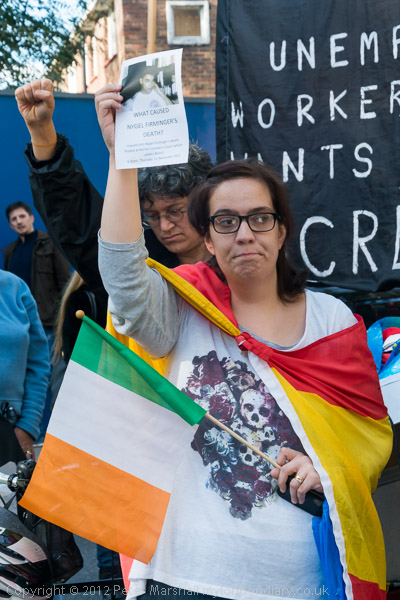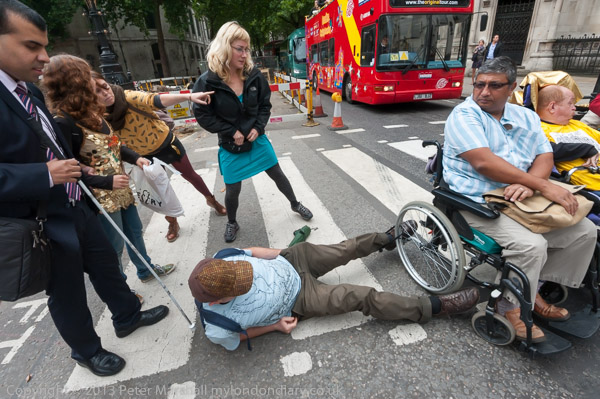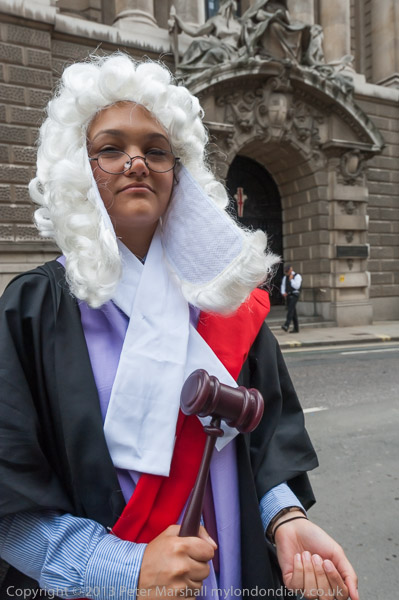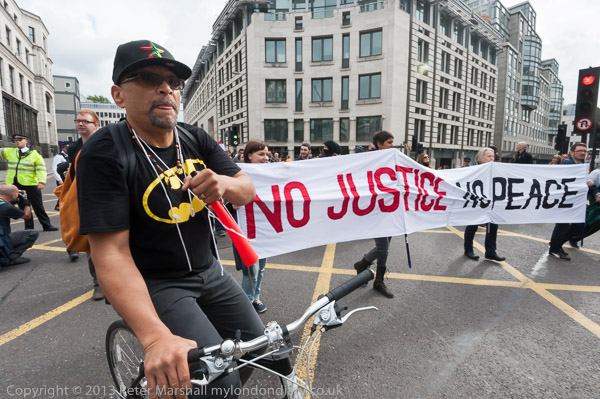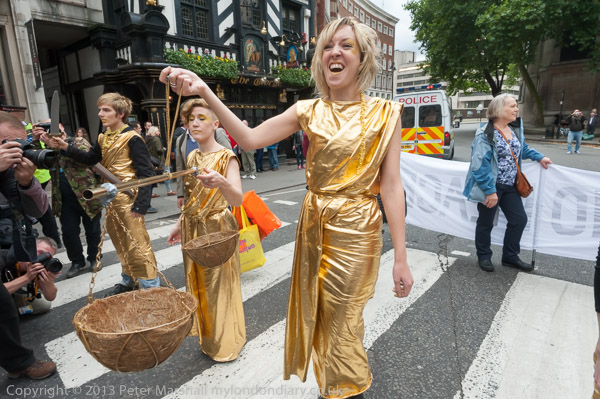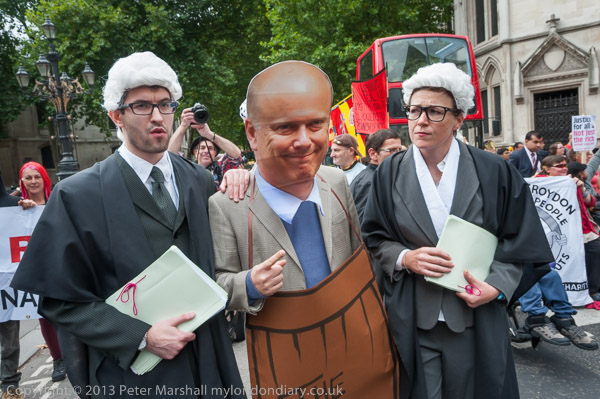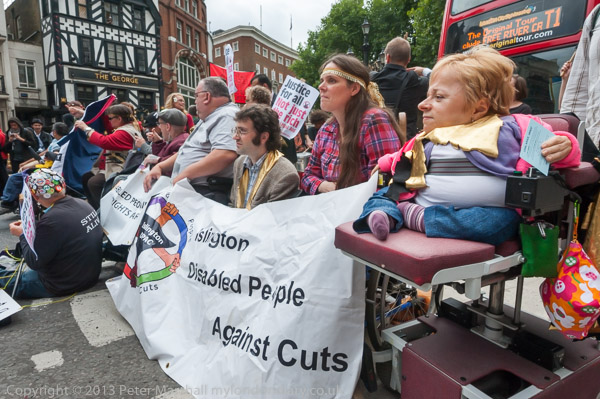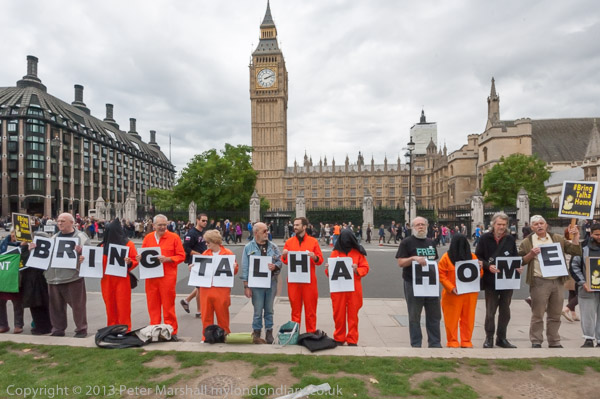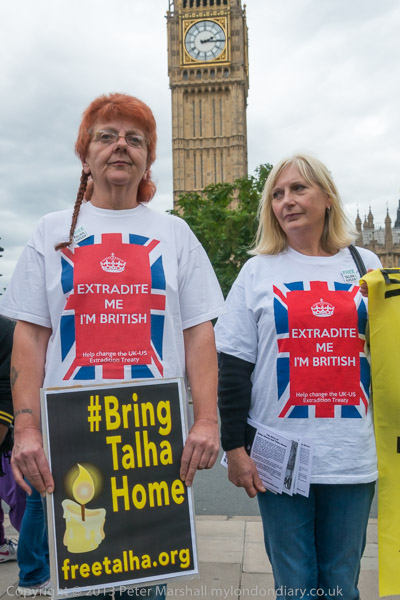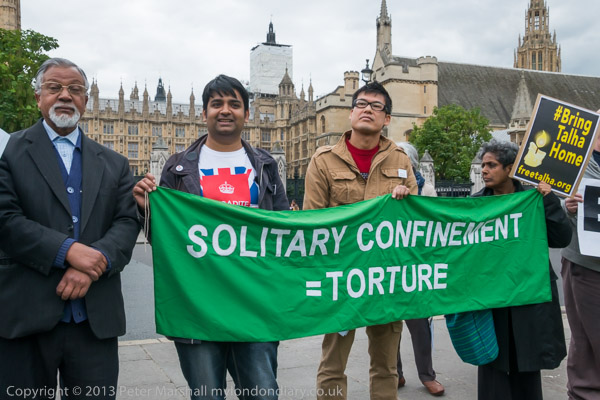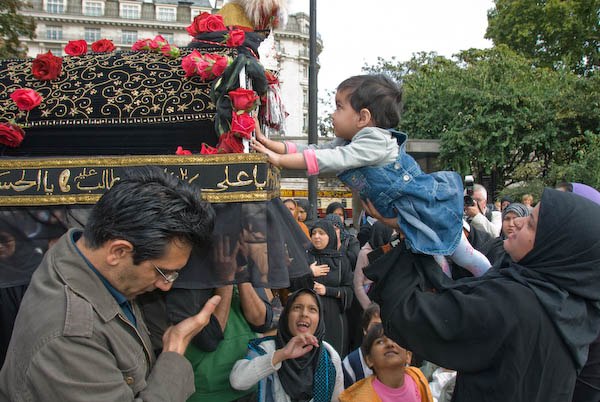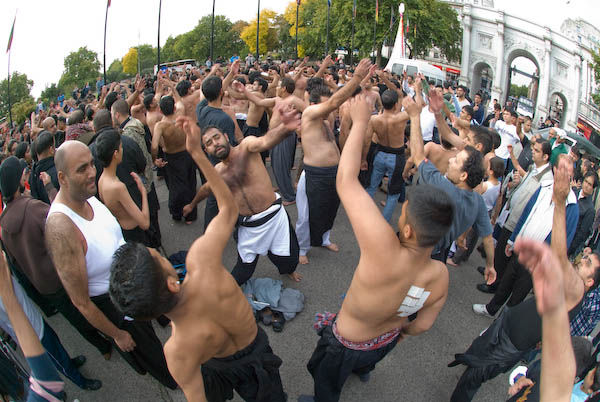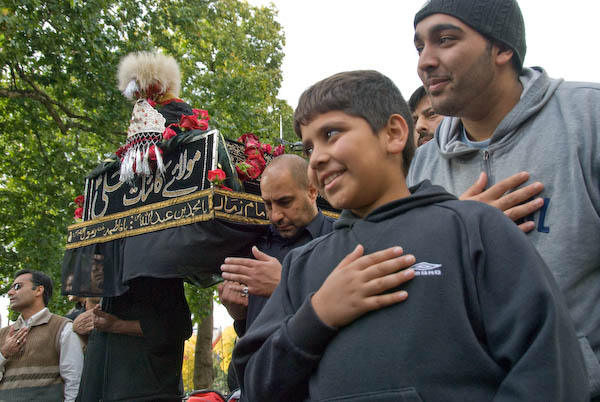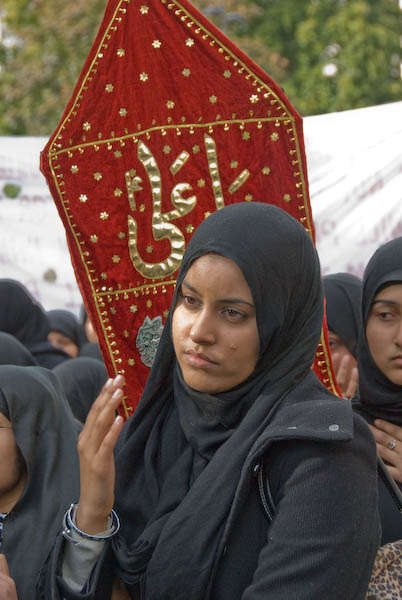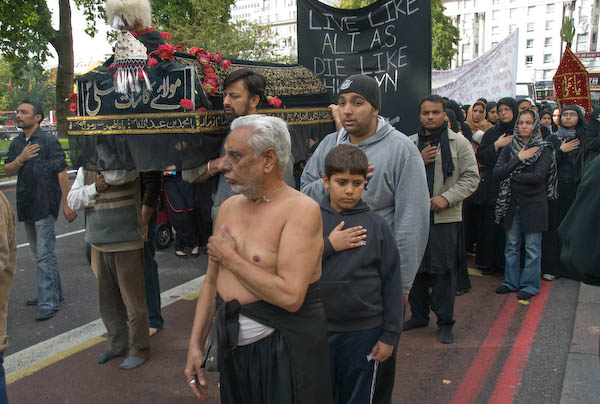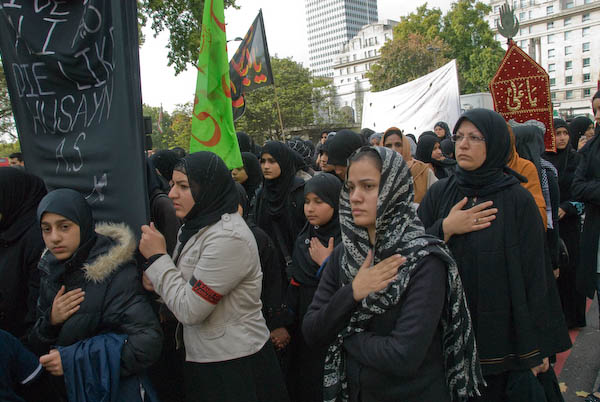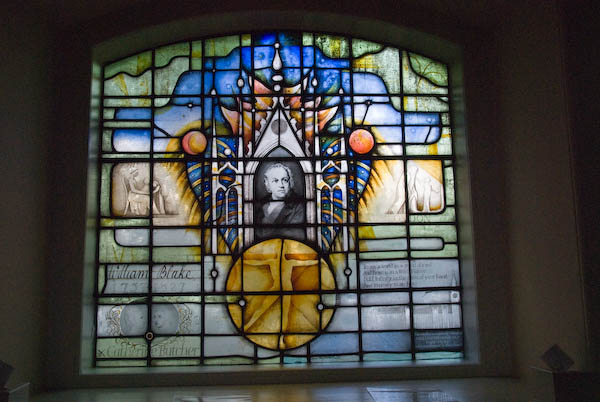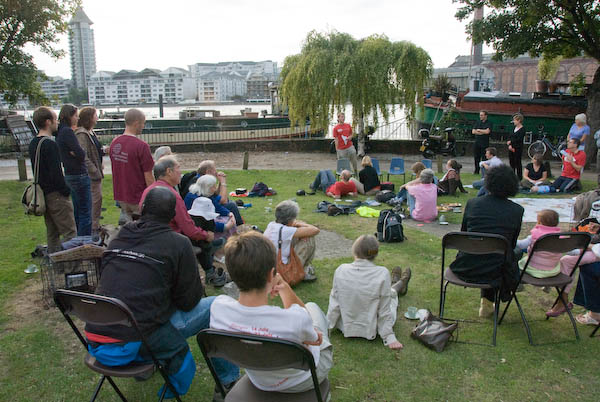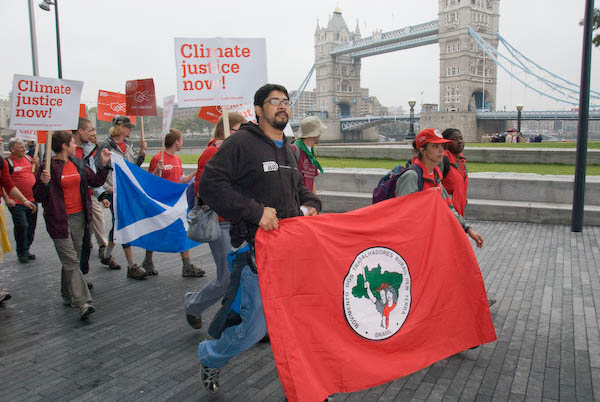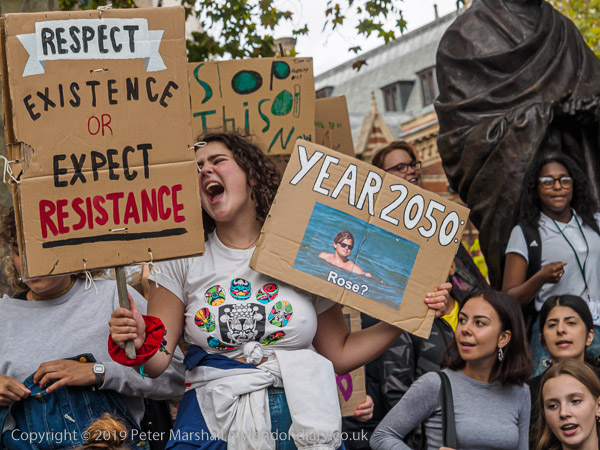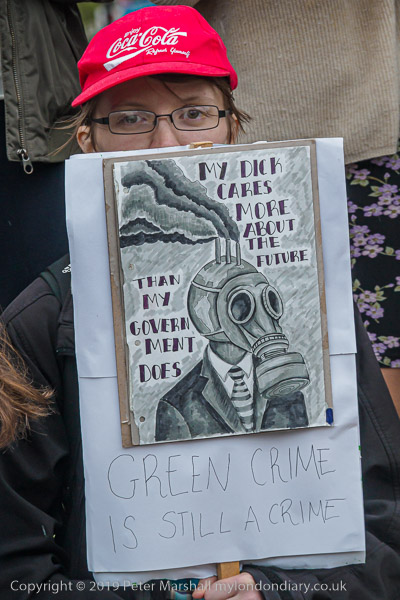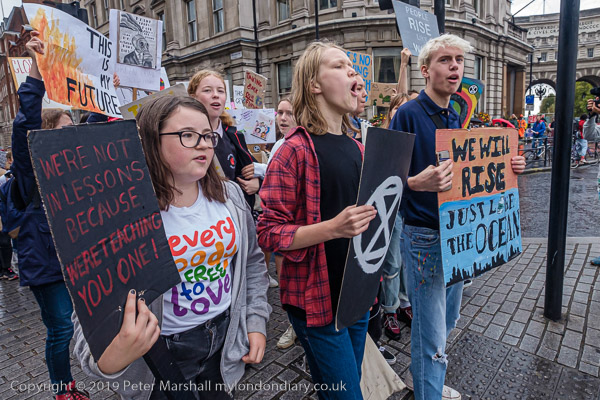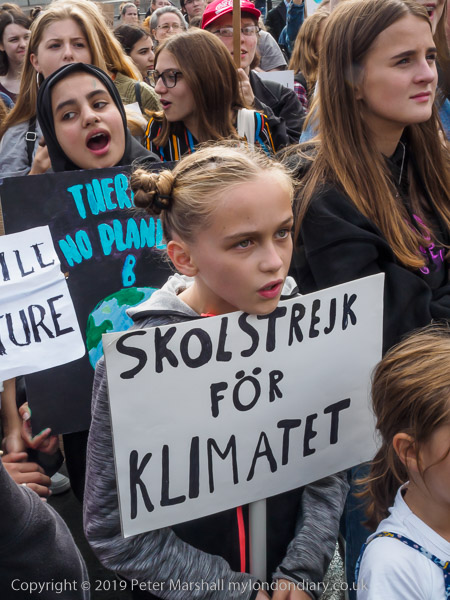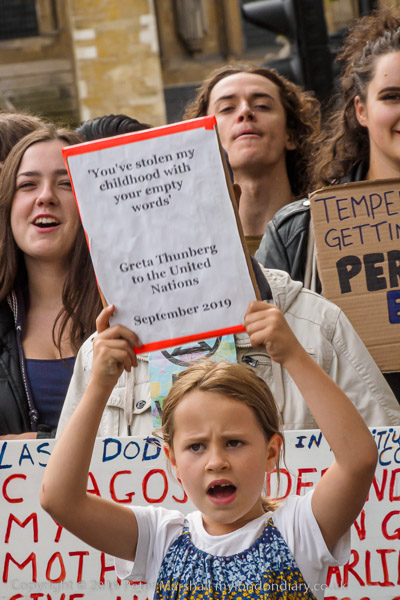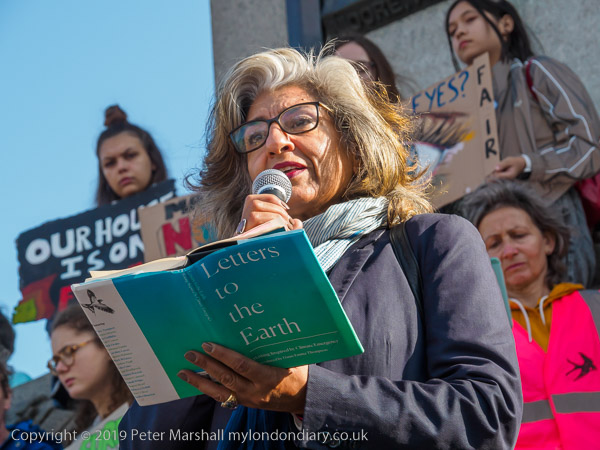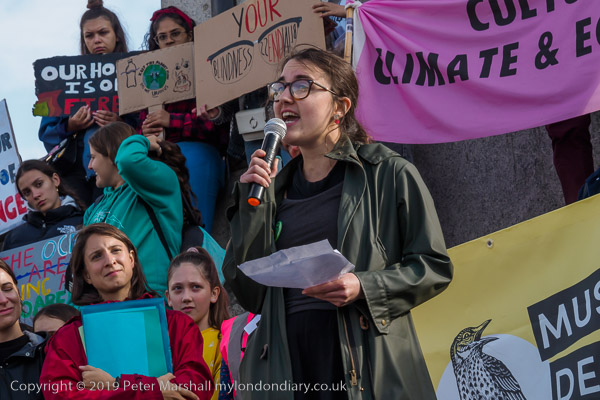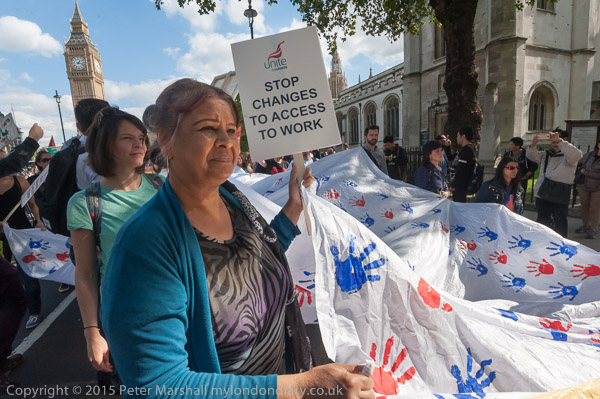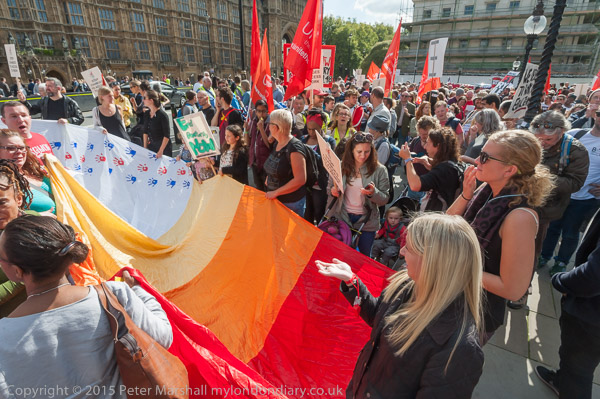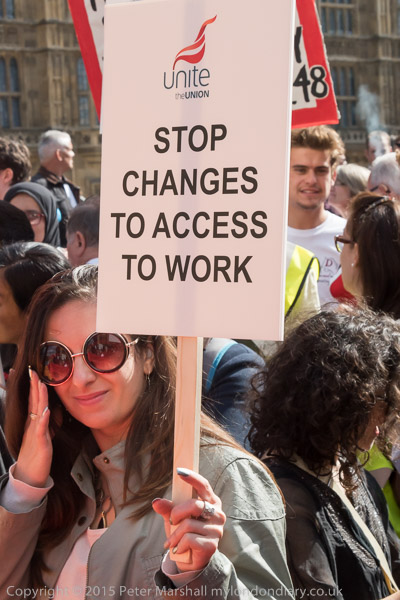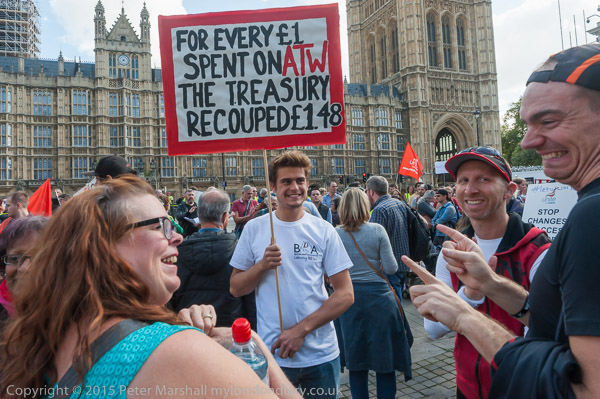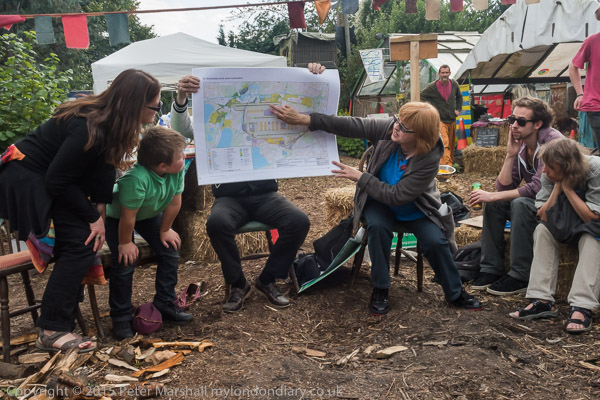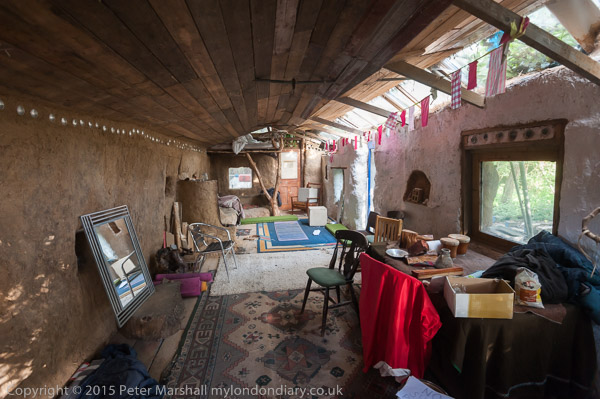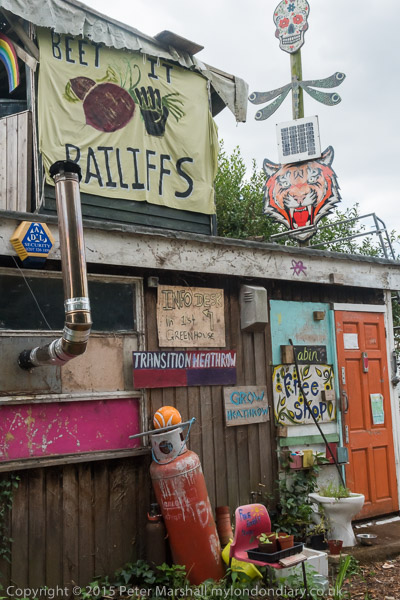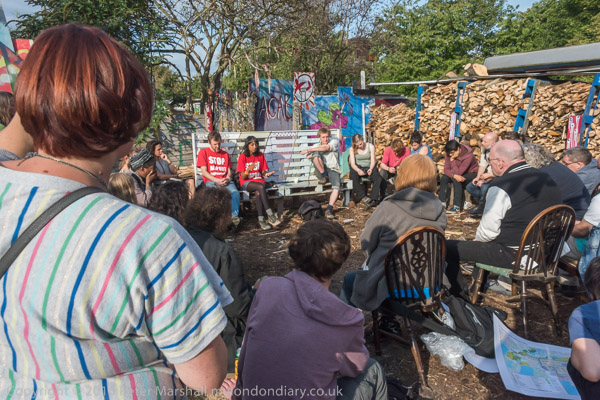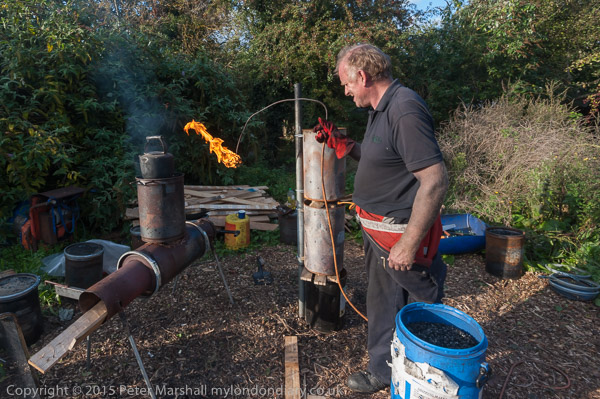
Saturday 18th October 2014 was another long and busy day for me. After briefly looking in at Parliament Square, where a few from Occupy Democracy had defied police to spend the night on the pavement I went to the Embankment where thousands were massing for the TUC ‘Britain Needs a Pay Rise‘ march which was due to begin in a couple of hours time.
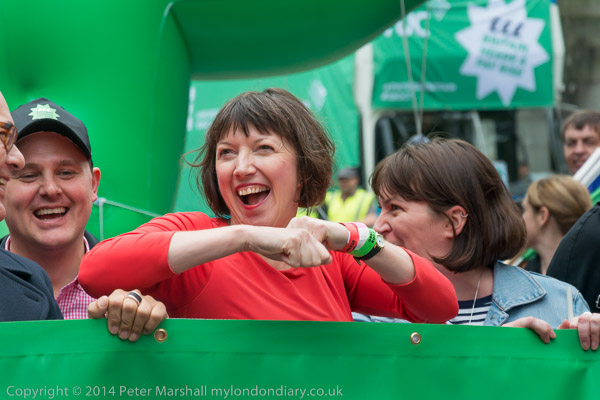
I returned to the TUC march a little later for the Press Call, seldom very interesting events to photograph, and then the start of the march where Frances O’Grady was doing her best for the camera.
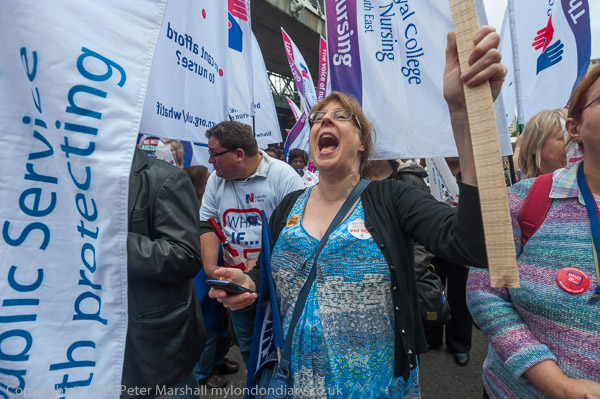
Things got a little more interesting as the march filed part me, and towards the end of the 80,000 or so I met rather more people I knew, including those with CND, Focus E15, Occupy London, Class War and other radical groups.
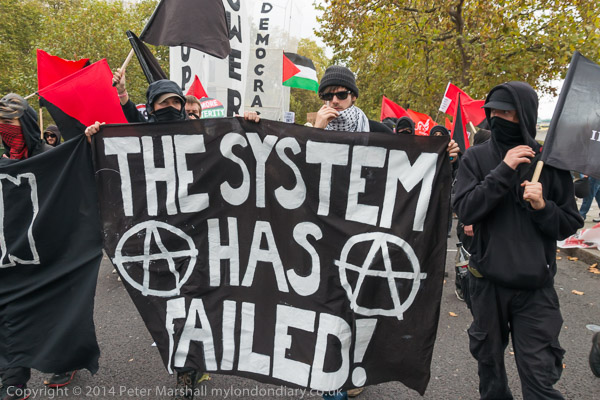
An hour and a quarter after the start the people at the back were getting close to the start of the march, and I went back for another look at things in Parliament Square. Not a lot was happening, apart from some illicit sleeping (its a crime there.)
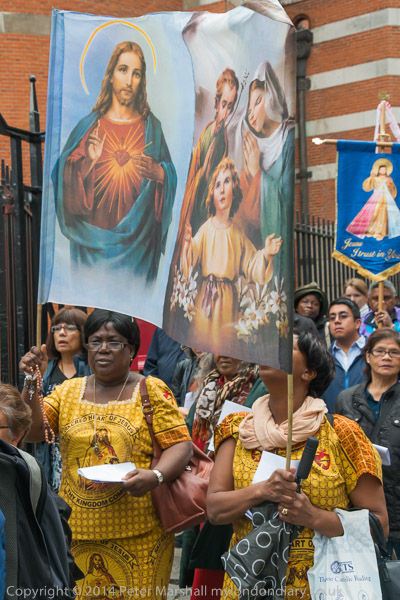
I went on to Westminster Cathedral, arriving in time to meet the Procession of the Blessed Sacrament leaving to walk to St Georges Cathedral in Southwark, and walking with them across Lambeth Bridge, from where I walked back towards Parliament Square.
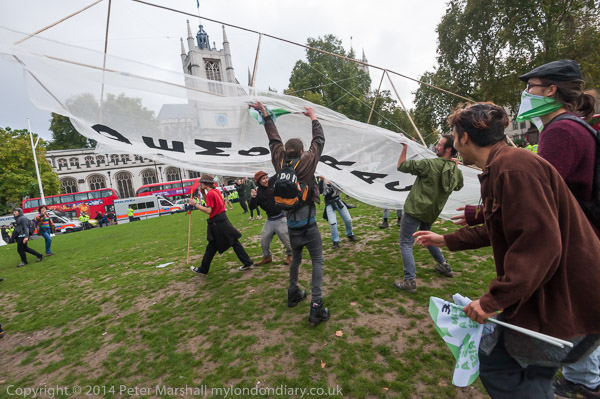
I arrived back as more people who had been on the TUC march were arriving, including a group from UK Uncut dancing to a music centre on a shopping trolley. Police and a warden from Westminster Council – who are responsible for the pavement opposite the Houses of Parliament came and tried to seize the music centre, but after much argument allowed the to keep it so long as they left the square.
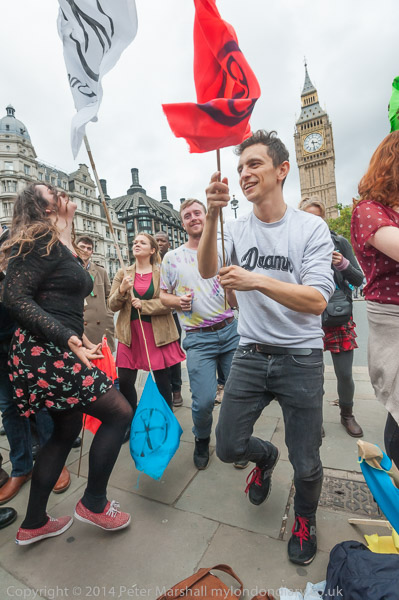
Shortly afterwards others arrived, with a group of anarchists running across the grass with black flags, chased by ‘heritage wardens’, then others poured onto the grass with the two towers with the messages ‘Power’ and ‘Democracy’ they had carried on the TUC march. A rally then took place, gathered around these to protect them, with John McDonnell MP as the first speaker, while police lined the edge of the square watching. Then small groups of police began to gather, ready to charge, and police reinforcements arrived; it seemed only a matter of minutes before they tried to clear the area.
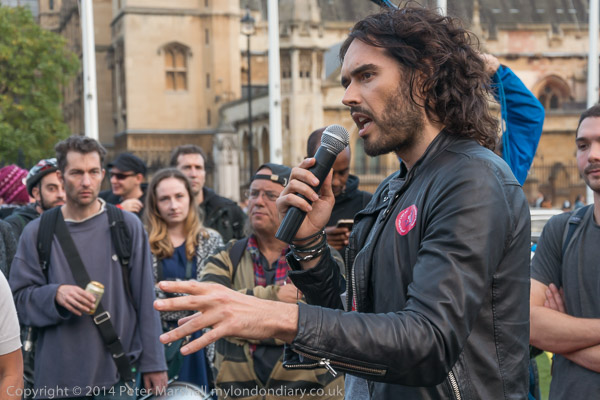
But after Russell Brand arrived to speak, the police rapidly melted away and the many vans drove off. I suspect they knew that had they attacked when he was present there would have been massive media coverage and decided it was better to come back at dead of night after most of the press and TV have left – as they did.
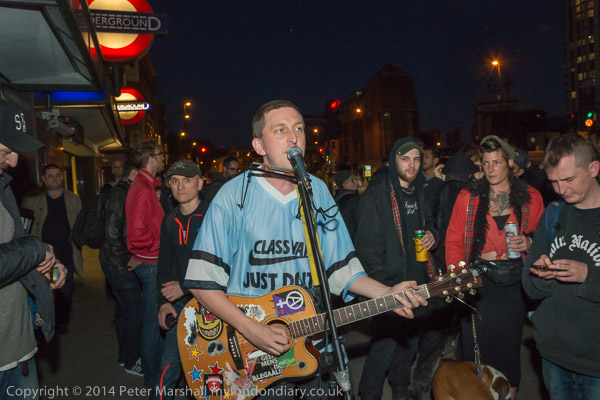
I left to go to Aldgate, where Class War were holding a Poor Doors Saturday Night Special against the separate doors for rich and poor residents at One Commercial St, Aldgate, with a larger than usual group who had come from the nearby Anarchist Book Fair. It was a livelier protest than usual with samba from Rhythms of Revolution and some songs from Cosmo up from Wales for the event, as well as a rather larger than usual police presence.
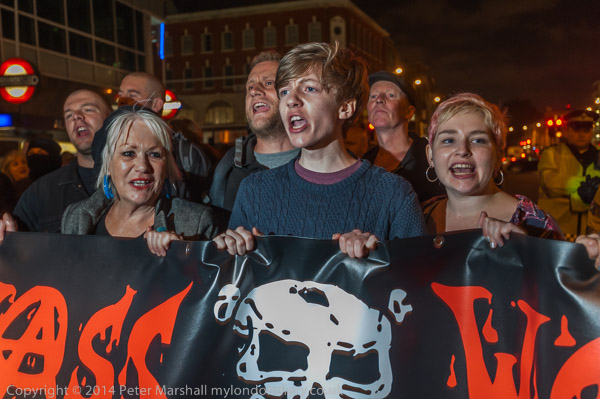
Inevitably at the end of the protest the group decided to move onto the busy Whitechapel High Street and block it, ignoring orders by the police to leave the highway. It’s a fairly dark area of street and my flash unit was having problems, but I managed to make a few pictures, some by the headlights of the blocked cars. After around ten minutes the protesters decided it was time to leave the road and end the protest, and I went home.
More at:
Poor Doors Saturday Night Special
Procession of the Blessed Sacrament
Britain Needs A Pay Rise
Democracy Camp takes the Square
